Create a Free Animated Avatar to Help Reduce Zoom Fatigue
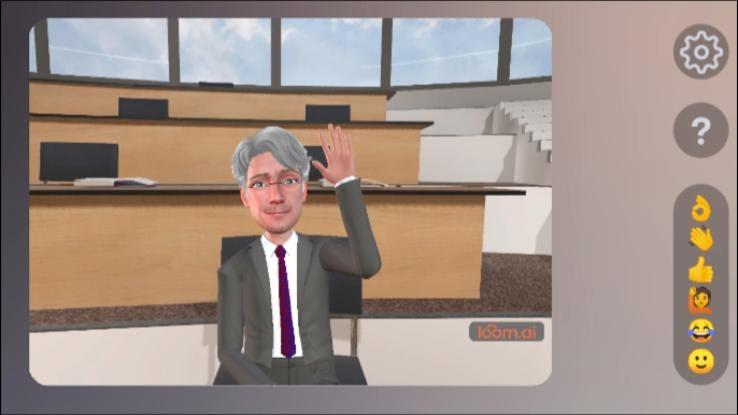
In the midst of the COVID-19 pandemic, we’ve all been dealing with our fair share of Zoom conference calls for work (and sometimes chats with family, too). And as a result, we’ve also been getting bogged down by more than our fair share of Zoom fatigue. In an age where many of us have suddenly found ourselves working — and doing just about everything else — from home, the anxiety of sitting through yet another conference call on Zoom can be all too real and all too draining.
This explosion of Zoom fatigue is one reason why AI company Loom.ai launched LoomieLive, a program that allows you to create a free avatar. But not only can you design an animated avatar that looks like you — you can also use it as a virtual stand-in when you stream it over your video-conferencing feed. This avatar effectively takes your place in the webcam view that would normally show your face, and there’s a whole host of reasons why you might want to try LoomieLive. Here’s what to know and how to get started with the app.
The Dawn of Zoom Fatigue Is Burning Out Our Brains
2020 has ushered in more than its fair share of changes, and many of them have been difficult to manage. As the COVID-19 pandemic continues to cause many governments to re-institute shelter-in-place and lockdown orders, the internet has become a virtual refuge for many businesses trying to stay afloat — or allow their employees to work from home to stay safe.

While video-conferencing platforms like Zoom have been a godsend on an economic level, being required to use them constantly — and feeling like we need to look our best for them, along with having trouble judging other participants’ social reactions — have left many employees with what a new psychology study is calling “Zoom fatigue.” The study describes the syndrome as “the tiredness, worry or burnout associated with overusing virtual platforms of communication.” In essence, attempting to stay focused while reading the virtual facial expressions of a large number of people is sending our brains into overdrive. The slight delays of video streaming make it more difficult for us to unconsciously read people’s reactions, and the reward circuits in our brains, which are highly attuned to immediate social cues in others’ facial expressions, aren’t getting the feedback they need when they’re used to getting it. As it turns out, not being able to communicate in person isn’t always quite as easy as it may sound, and it’s making some of our brains’ unconscious processes go haywire. That has an effect we’re very conscious of, though: It tires us out.
As the study points out, “Much of communication is actually unconscious and nonverbal, as emotional content is rapidly processed through social cues like touch, joint attention and body posture.” Video conferences don’t provide that for us. So, on top of the anxiety of living through a frightening pandemic, struggling to adapt to a new form of communication is leaving many people with a feeling of burnout.
Why Create Your Own Virtual Stand-In?
It sounds like there’s an easy solution to all these video-call woes, right? You can always just turn off your camera. But who wants to be the only one in a room full of colleagues who dares to take advantage of such an option — especially at the risk of not seeming like a team player? This is where LoomieLive comes in with a fun compromise.
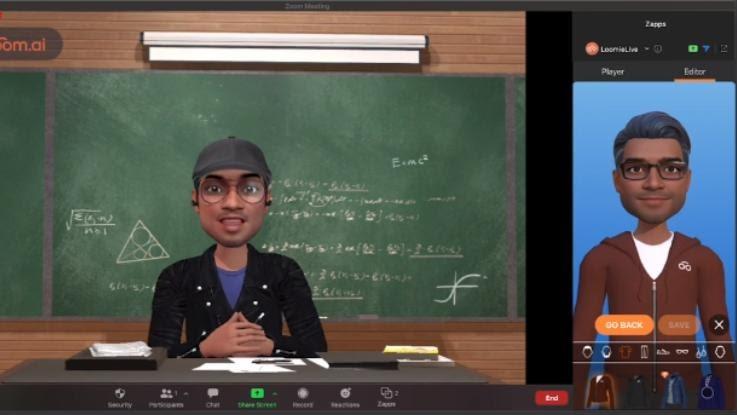
The program offers users the chance to create free avatars that they can project over their live webcam video streams on conferencing platforms like Zoom and Google Hangouts. This creates the impression that you’re present in the meeting, but it removes some of that pressure to look like you’re perfectly office-ready. When your avatar is live, its lips will sync up with anything you say over the audio feed so that your words appear to flow from its mouth, giving it a touch more realism.
While the animated avatars won’t mimic your movements or facial expressions, that’s actually part of their allure. They’re designed to move on their own and reflect realistic expressions that make it appear like they’re always paying attention…even if you’re not. Once your avatar has taken your seat at the virtual conference table, the real you can move around, look down or even clean the house while you conference — although you should still be making an effort to listen to what’s going on. Your avatar will appear to remain respectfully engaged in the conversation, allowing you to enjoy the same freedom you would have if your camera was turned off.
Set Up Your LoomieLive Avatar in the Mobile App
The first thing you need to do to get started is to download the LoomieLive app on either your iPhone or Android device. From there, you’ll create an account using your email address or an existing Google, Apple or Facebook account.
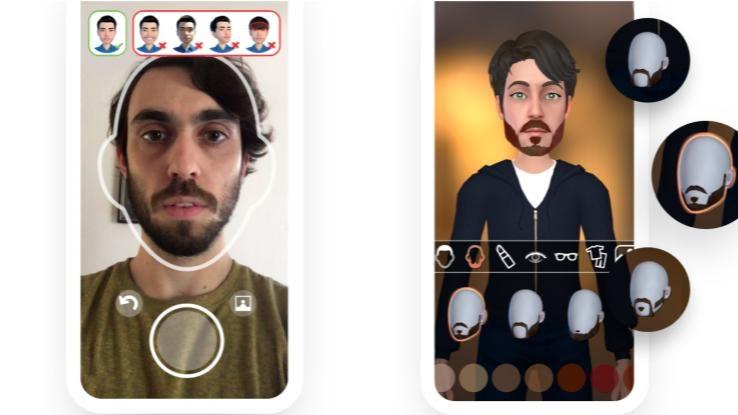
The app then asks you to take a selfie, which it uses to construct the initial facial shape and structure of your avatar. When you arrive at the next screen, just tap on the little paintbrush icon at the bottom. The app then presents a number of editing options you can use to tweak your facial features, hairstyle and eye color. You’ll also get to create a virtual outfit for your avatar and accessorize with things like jewelry and hats.
Once you’re done, you’ll be ready to move over to your desktop or laptop computer, where you’ll download the LoomieLive camera. After you’ve installed it, sign in with the same username you created on the phone app, and your avatar will appear.
Use the LoomieLive Camera to Project Your Avatar
Once you’ve connected to LoomieLive on your computer, the camera lets you choose from a series of backgrounds that range from nature- to office-inspired locales. You’ll also see a set of emojis on the dashboard; these can make your avatar do things like wave, laugh and give a thumbs up.
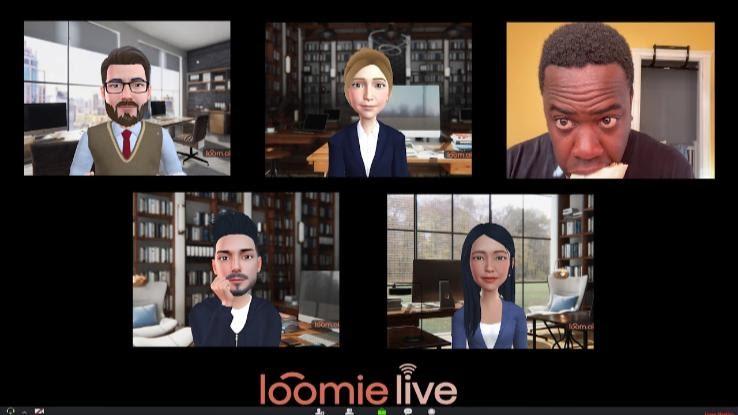
When you’re ready to debut your avatar on Zoom, just sign into it from your desktop and click the “up” arrow next to the Stop button. This should activate a menu that asks you to select which camera you’d like to use. Select the LoomieLive Camera from the list of options, and your avatar takes over your video feed. You’ll still be able to talk the same way you always do, but your avatar will be the one appearing to interact on your camera feed.
When you’re headed into a meeting, create a business suit for your avatar to wear so it can show up looking sharp. Your boss might just be impressed with your efforts to keep up appearances during quarantine, even if they’re of the virtual variety.
Does LoomieLive Work on Other Video-Conferencing Platforms?
Once you create a free avatar on LoomieLive, you can stream it to Zoom and a variety of other platforms. Your avatar can also act as your stand-in on Google Hangouts, Skype, Webex and Microsoft Teams. You should find it fairly easy to stream over all of these platforms; you just have to select LoomieLive as your video input feed in your preferred program’s settings.
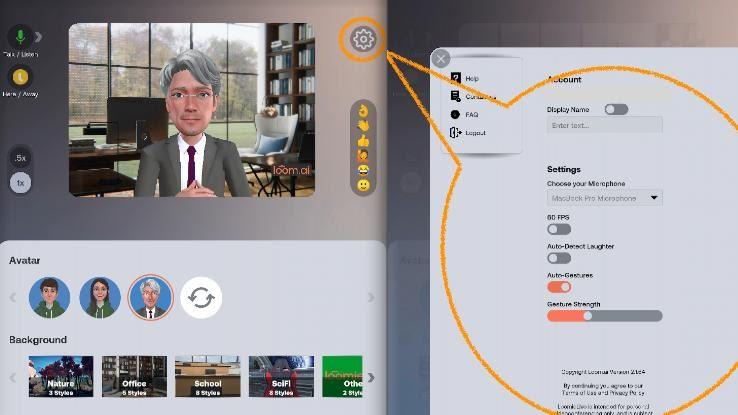
Not only is an avatar a great way to look like the perfect employee at the virtual conference table, but it’s also a fun way to chat with friends on those days when you don’t really feel like getting camera-ready. Amid the outfit options, you’ll find everything from hoodies and T-shirts to surprisingly stylish overcoats and glasses. Though living in the virtual world has come with its fair share of obstacles, hopefully innovations like this one will help make life easier until the real world reopens.





